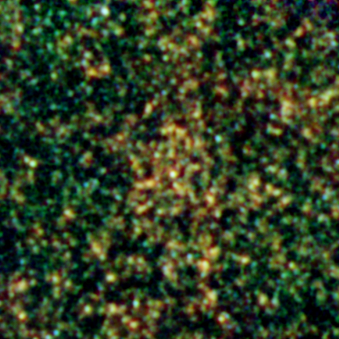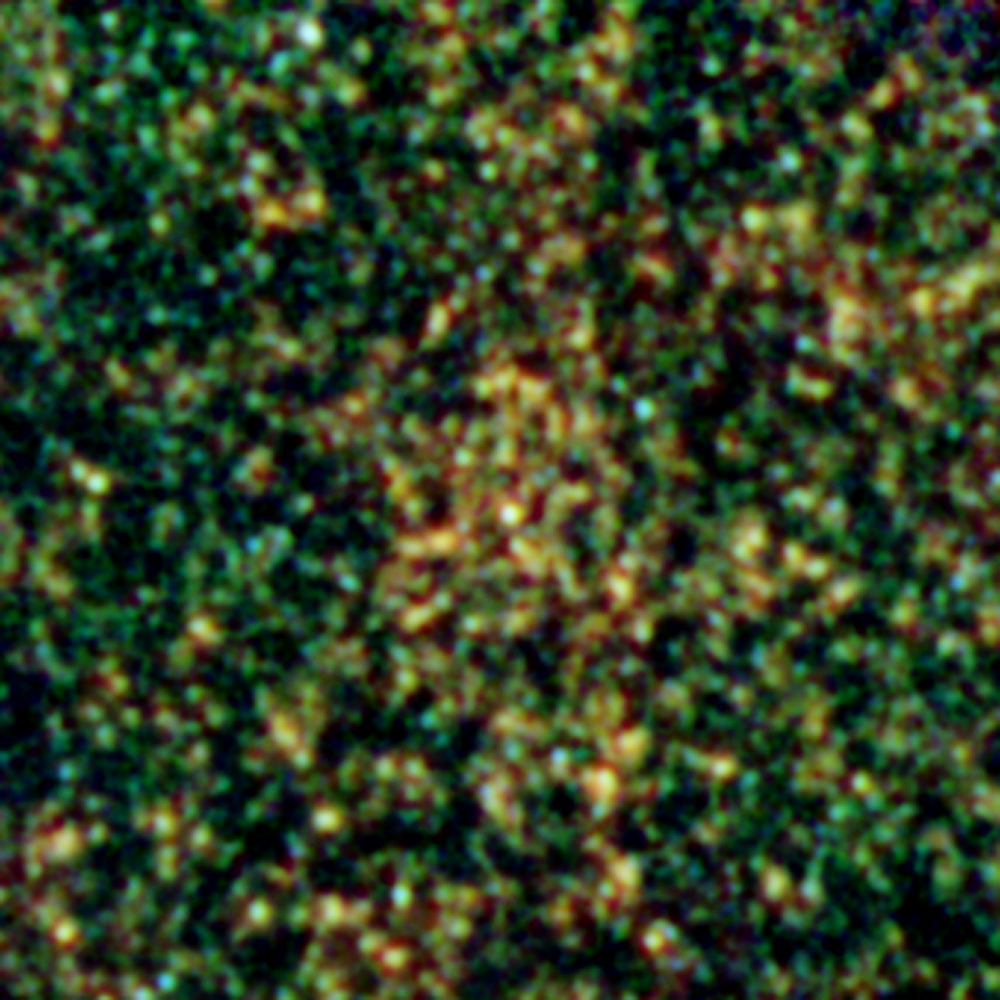| Basic Information | |
| What is this? | A distant cluster of galaxies |
| Where is it in the sky? | In the constellation of Bootes |
| How big is it? | The cluster contains hundreds or thousands of stars, spanning distances of millions of light years |
| How far away is it? | The cluster is seen as it was over ten billion years ago, when the Universe was just three billion years old |
| What do the colours represent? | The left image shows part of the sky observed by Planck, while the right shows a zoom on Herschel’s corresponding image. In both cases, redder objects are more distant, and bluer objects closer |
Downloads
See this object in:
By combining Herschel observations with those from the Planck satellite, astronomers have identified clusters of galaxies at greater distances than has previously been possible. These newly discovered clusters, seen as they were billions of years ago, are helping to build a better picture of how galaxy clusters formed and evolved.

Galaxy clusters are collections of hundreds or thousands of galaxies, held together by gravity. They are the most massive structures in the Universe, but understanding their formation can be difficult. To piece together the story of how they grow over billions of years, astronomers need to find clusters at greater and greater distances, thus seeing them as they were longer and longer ago. Individual galaxies have been found at immense distances, but these clusters remain elusive.
“Although we’re able to see individual galaxies that go further back in time, up to now, the most distant clusters found by astronomers date back to when the universe was 4.5 billion years old”, explains Dr David Clements, Imperial College London, who led the research. “This equates to around nine billion light years away. Our new approach has already found a cluster in existence much earlier than that, and we believe it has the potential to go even further.”
At these earlier times the galaxies in the clusters were forming stars at much faster rates than galaxies around us today, thus becoming filled with cosmic dust. This dust blocks the light from the stars themselves, making them all but invisible to optical telescopes. Finding these galaxies means observing the dust itself, which requires looking at far-infrared and sub-millimetre wavelengths, and makes Herschel images a great place to start.
But even then, finding these galaxy clusters can be tricky, since they are set against the backdrop of all the other distant galaxies scattered over the sky. The trick is not to look for the groups of galaxies, but to identify parts of the sky where the galaxies appear to be grouped slightly closer together.
This is where the Planck satellite comes in, surveying the entire sky at similar wavelengths to Herschel. Planck’s instruments didn’t have such high resolution as Herschel, and so do not show individual galaxies at these distances. But they do pick out clumps of infrared light, some of which can then be identified in Herschel images.
By searching several of the patches of the sky observed by Herschel as part of the HerMES project, the team found sixteen objects which were seen by both telescopes. Eleven of these were known objects, such as relatively nearby galaxies or previously identified clusters, but four were unknown. A closer look at the Herschel images, shows that in each of these four locations there does appear to a group of distant galaxies at this location – the sign of a distant cluster of galaxies. These clusters are at a range of distances, with their light taking between six and ten billion years to reach Earth. The most distant is therefore being seen when the Universe was just three billion years old.
Galaxies are typically separated into two types: spiral galaxies, like our own Milky Way, and elliptical galaxies. Most clusters are dominated by giant elliptical galaxies, which finished forming stars billions of years ago, and so ten to contain very little dust and gas. “What we believe we are seeing in these distant clusters are giant elliptical galaxies in the process of being formed,” says Dr Clements.
The four galaxy clusters found as part of this work may well be just the tip of the iceberg. Using much a much larger range of Herschel data, the team hopes that the same technique allows them to find hundreds, possibly even thousands, of similar objects.
Detailed Information
- Four new galaxy clusters take researchers further back in time (Royal Astronomical Society)


